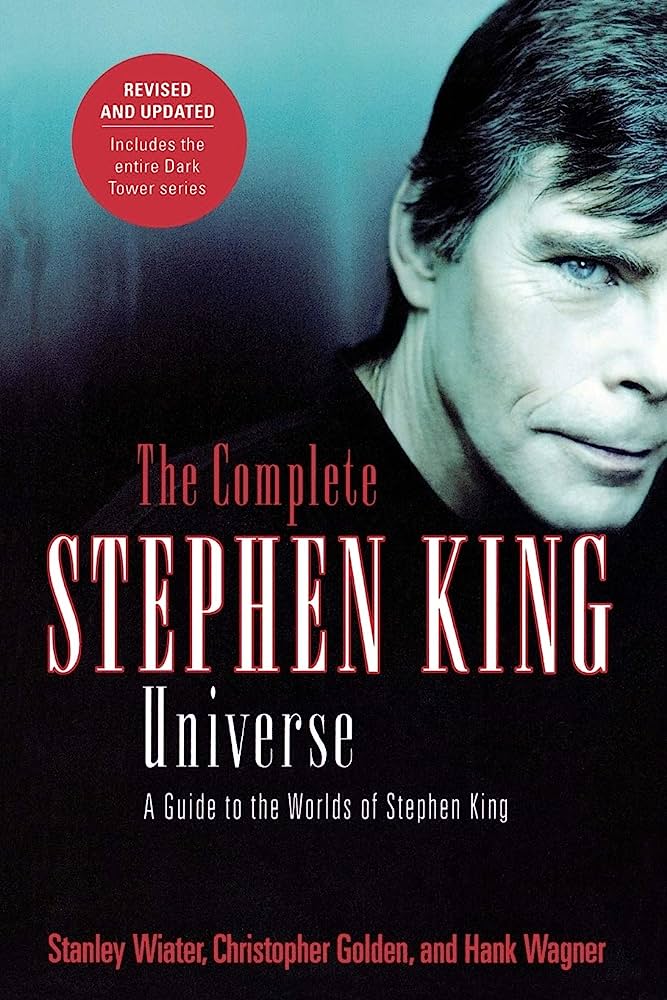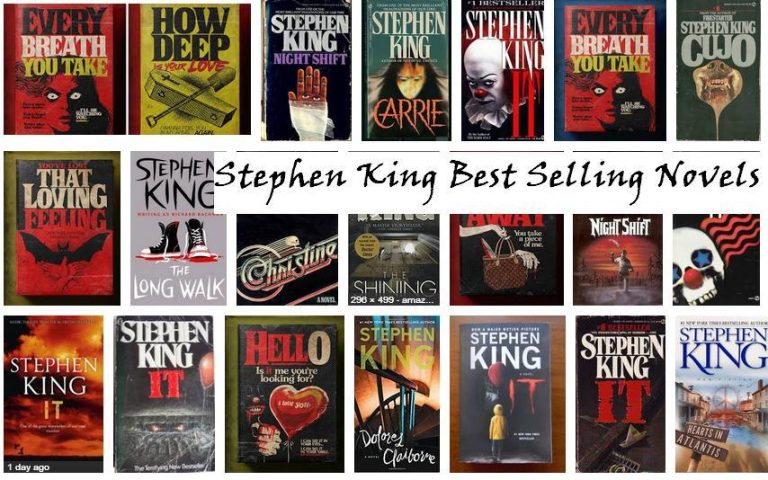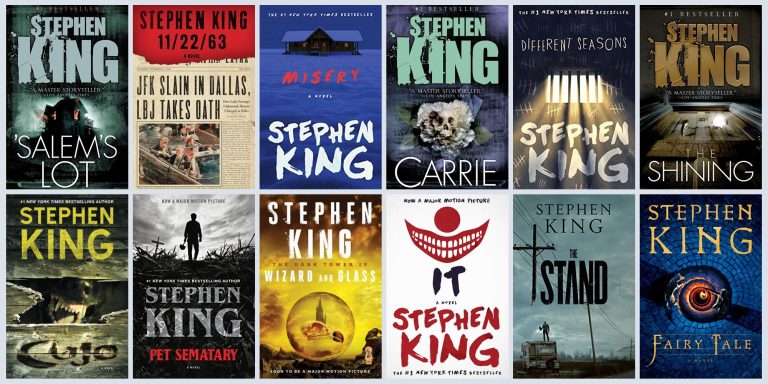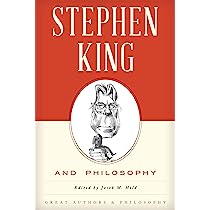The Unsettling Reflections: Mirrors And Duality In Stephen King’s Books
In the eerie world of Stephen King’s books, there is one recurring element that sends shivers down our spines: mirrors. These seemingly innocent objects hold a dark secret, reflecting not only our physical appearance but also the twisted duality of our souls. In this article, we will delve into the unsettling reflections found in Stephen King’s books, exploring the symbolism of mirrors and the profound impact they have on his characters’ lives.
When we gaze into a mirror, we expect to see a faithful representation of ourselves staring back. But in the twisted reality of Stephen King’s imagination, mirrors serve as gateways to parallel dimensions, revealing the darker sides of our nature. The duality of good and evil within each person is magnified through these reflective surfaces, often leading to horrifying consequences. From Jack Torrance’s descent into madness in “The Shining” to Rose Madder’s escape from an abusive marriage in the eponymous novel, mirrors become portals through which characters confront their inner demons and face their deepest fears.
In the pages of Stephen King’s books, mirrors become more than just objects; they become metaphors for the human psyche and the unsettling truths we prefer to keep hidden. Join us as we explore the chilling symbolism and psychological depth behind the mirrors in Stephen King’s works, unlocking the secrets they hold and the horrors they reflect. Get ready to be captivated by the dark magic of mirrors in the terrifying world of Stephen King.
In Stephen King’s books, mirrors play a significant role, often reflecting the dark and unsettling aspects of the characters. These reflections serve as a metaphor for duality, representing the hidden sides of individuals. King masterfully uses mirrors to explore the depths of human nature and the blurred lines between good and evil. From “The Shining” to “IT,” mirrors serve as portals to the characters’ inner demons, providing a chilling and thought-provoking reading experience.
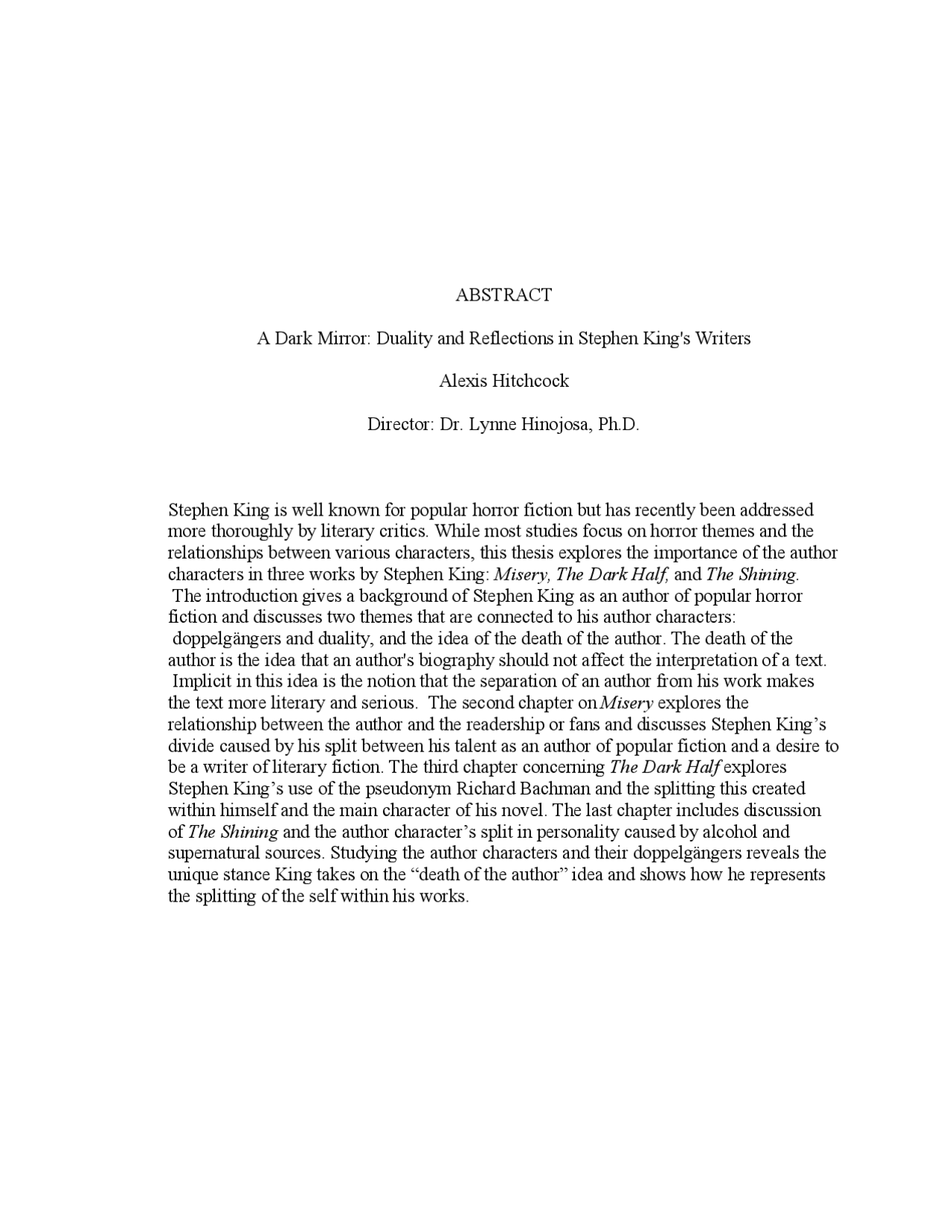
The Unsettling Reflections: Mirrors and Duality in Stephen King’s Books
Stephen King is a master of horror and suspense, known for his ability to create chilling and unsettling stories that captivate readers. One recurring theme in his works is the use of mirrors and duality, which adds an extra layer of psychological terror to his narratives. In this article, we will explore the significance of mirrors and duality in Stephen King’s books and how they contribute to the overall sense of unease and fear.
Mirrors as Portals to Other Realities
In many of Stephen King’s novels, mirrors are depicted as more than just reflective surfaces. They become mysterious objects that serve as portals to other dimensions or alternate realities. Through these mirrors, characters are able to glimpse into worlds beyond their own, often encountering terrifying and malevolent entities.
For example, in King’s iconic novel “The Shining,” the character of Danny Torrance has psychic abilities that allow him to see the spirits that haunt the Overlook Hotel. One of the most chilling scenes in the book involves Danny’s encounter with the ghostly woman in Room 217, who is revealed through a mirror. The mirror serves as a gateway between the physical world and the supernatural realm, heightening the tension and terror.
The Duality of the Self
In addition to using mirrors as portals, Stephen King also explores the concept of duality within his characters. Many of his protagonists are faced with internal conflicts, battling their own dark sides or struggling with their identities. This duality adds complexity to the characters and creates a sense of unpredictability.
Take, for example, the character of Annie Wilkes in “Misery.” On the surface, she appears to be a harmless and devoted fan of the protagonist, Paul Sheldon. However, as the story unfolds, it becomes clear that Annie has a dark and violent side. She has a dual nature, oscillating between being Paul’s caretaker and his tormentor. This internal conflict adds an extra layer of tension and makes Annie a truly unsettling character.
The Power of Reflection
Another aspect of mirrors in Stephen King’s books is their power to reveal hidden truths and confront characters with their own flaws and fears. Mirrors act as a reflection of the self, forcing characters to confront their darkest secrets and confrontations.
In “Bag of Bones,” the protagonist, Mike Noonan, discovers a hidden room in his lakeside cabin that is filled with mirrors. These mirrors show him glimpses of his own past and the truth behind his wife’s untimely death. Through this confrontation with his own reflection, Mike is forced to confront his own guilt and come to terms with his past.
The Haunting Nature of Mirrors
While mirrors can reveal truths, they can also be haunting and unsettling in themselves. In Stephen King’s stories, mirrors are often depicted as eerie and sinister objects, capable of distorting reality and reflecting a twisted version of the world.
In “Rose Madder,” the main character, Rosie, discovers a mysterious painting that acts as a portal to another world. This painting is covered in a reflective surface that distorts Rosie’s reflection, making her question her own sanity. The mirror-like quality of the painting adds to the unsettling atmosphere of the story, as Rosie is confronted with a distorted version of herself.
Conclusion
Stephen King’s use of mirrors and duality in his novels adds a layer of psychological horror to his stories. Mirrors become more than just reflective surfaces, acting as portals to other dimensions and confronting characters with their own inner demons. The duality of the self creates complex and unpredictable characters, adding depth to the narratives. Through the power of reflection, King explores the haunting nature of mirrors and their ability to reveal hidden truths. Overall, the unsettling reflections found in Stephen King’s books contribute to the sense of unease and fear that have made him a master of the horror genre.
The Unsettling Reflections: Mirrors and Duality in Stephen King’s Books
Stephen King, the master of horror, often uses mirrors as a symbol of duality in his books. Here are the key takeaways from his exploration of mirrors:
- Mirrors reflect our true selves, both the good and the evil.
- Mirrors can reveal hidden truths and dark secrets.
- Mirrors can be portals to other dimensions or alternate realities.
- Mirrors can distort reality and create a sense of unease and confusion.
- Mirrors often serve as a metaphor for the duality of human nature.
Frequently Asked Questions
1. How does Stephen King use mirrors as a symbol in his books?
In Stephen King’s books, mirrors are often used as a symbol of duality and self-reflection. They serve as a metaphor for the hidden aspects of human nature and the inner conflicts that characters face. Mirrors in King’s stories often reveal a darker version of the self, reflecting the characters’ fears, insecurities, or even their own evil nature.
By using mirrors as a symbol, King invites readers to explore the concept of duality and the idea that everyone has a hidden side. The mirror serves as a gateway to this hidden realm, allowing characters to confront their fears and confront their own inner demons.
2. What role do mirrors play in creating a sense of unease in Stephen King’s books?
Mirrors play a crucial role in creating a sense of unease in Stephen King’s books. They are often used to distort reality, blur the line between the physical and the supernatural, and create an atmosphere of suspense and psychological tension.
In King’s stories, mirrors are frequently associated with the supernatural and the unknown. They reflect not only the physical appearance of characters but also their inner thoughts and emotions. This blurring of boundaries between the real and the imagined adds a layer of uncertainty and unpredictability to the narrative, heightening the sense of unease and dread.
3. Are there any specific Stephen King books that prominently feature mirrors?
Yes, there are several Stephen King books that prominently feature mirrors as a recurring motif. One notable example is “The Shining,” where the Overlook Hotel is filled with mirrors that reflect the haunted past of the building and its inhabitants.
Another example is “Gerald’s Game,” where the main character is handcuffed to a bed and forced to confront her own past traumas through the reflection in a nearby mirror. Mirrors also play a significant role in “Rose Madder,” “From a Buick 8,” and “Lisey’s Story,” among others.
4. How do mirrors contribute to the psychological horror in Stephen King’s books?
Mirrors contribute to the psychological horror in Stephen King’s books by amplifying the characters’ inner fears and insecurities. They become a tool through which the characters confront their own worst nightmares and the darkest corners of their minds.
By presenting distorted reflections and revealing hidden truths, mirrors become a source of psychological torment for the characters. The uncertainty and sense of unreality that mirrors create contribute to the overall atmosphere of horror, leaving readers unsettled and questioning their own perceptions of reality.
5. What is the significance of duality in Stephen King’s books and how do mirrors represent it?
The theme of duality is a prevalent motif in Stephen King’s books, and mirrors are often used as a visual representation of this concept. Duality refers to the coexistence of opposing forces or ideas, such as good and evil, light and dark, or sanity and madness.
Mirrors symbolize duality by reflecting both the physical appearance and the hidden aspects of characters. They reveal the dual nature of individuals, highlighting the struggle between their rational selves and their darker impulses. Mirrors also serve as a reminder that there is always another side to every story, and that appearances can be deceiving.
Stephen King’s newest book is out now!
Final Thoughts
As we reflect on the intriguing and unsettling theme of mirrors and duality in Stephen King’s books, it becomes evident that these elements serve as powerful metaphors for the human psyche and the complexities of our own inner selves. Through the use of mirrors, King expertly explores the dual nature of humanity, the shadows that lurk within us, and the profound impact our choices can have on our lives.
In King’s narratives, mirrors act as gateways to alternate realities, where characters are forced to confront their darkest fears and hidden desires. They become physical manifestations of the internal struggles we all face, offering a chilling reflection of our own strengths and weaknesses. The duality represented in these stories serves as a reminder that we all possess light and darkness within us, and that our actions have consequences that can shape our destinies.
By delving into the psyche of his characters and using mirrors as a narrative device, Stephen King challenges readers to confront their own dualities, their own reflections in the mirror. Through his masterful storytelling, he encourages us to explore the depths of our own souls and confront the unsettling truths that lie beneath the surface. The power of mirrors in King’s books lies not only in their ability to unsettle and frighten, but also in their capacity to provoke introspection and self-reflection.
In conclusion, Stephen King’s exploration of mirrors and duality in his books serves as a haunting reminder that we are all complex beings, capable of both great good and terrible darkness. The reflections we see in the mirror are not just physical, but symbolic of the choices we make and the paths we choose to follow. So, the next time you catch a glimpse of your own reflection, take a moment to ponder the unsettling truths that may lie within and embrace the duality that makes us human.


